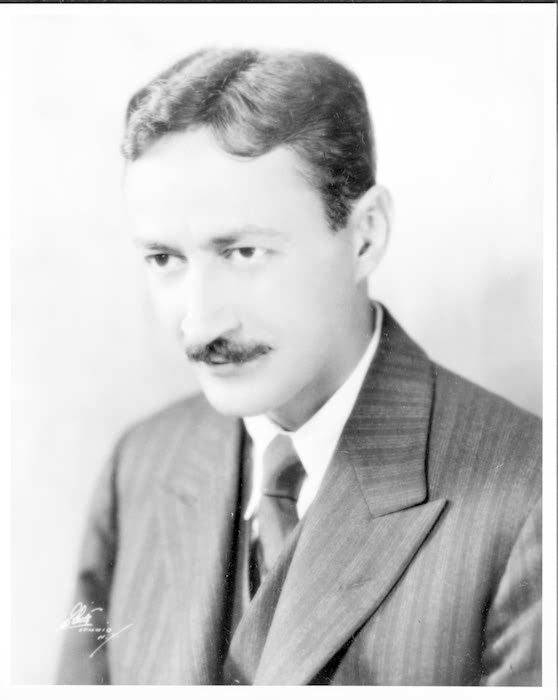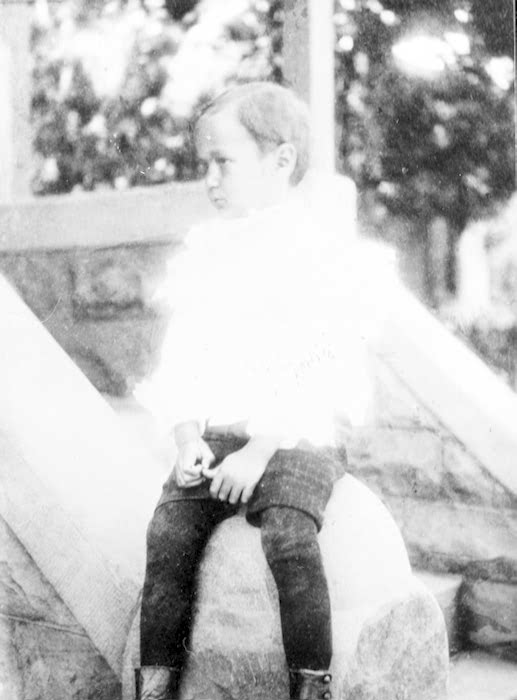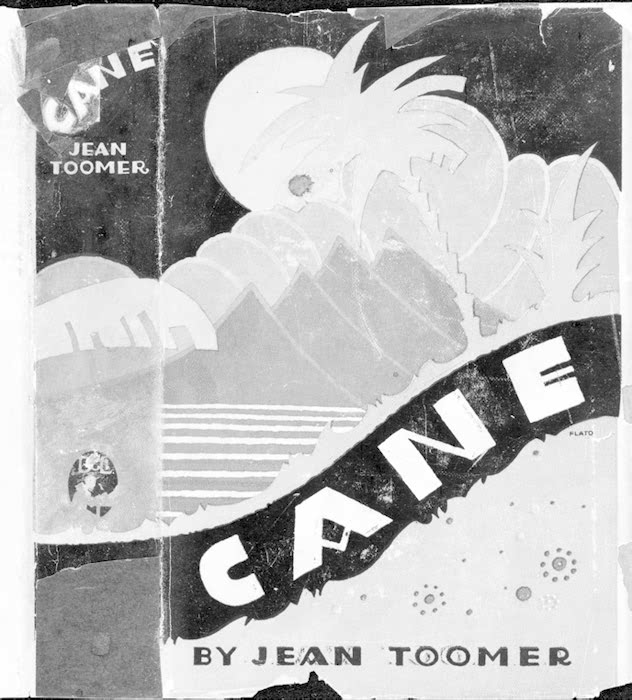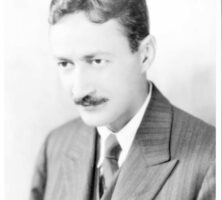Jean Toomer is best known as the author of the 1923 novel Cane, an influential work about African American life in which Toomer drew largely on his experiences in Hancock County.
Toomer wrote Cane after he left his home in Washington, D.C., and worked briefly as a substitute principal at a Black industrial school in the middle Georgia town of Sparta. There he experienced a creative outpouring of poetry, drama, stories, and sketches that formed Cane, a narrative that begins in the rural South, switches to the urban North, and returns to the South for its conclusion. “Sempter,” the southern setting of Cane, is modeled on Sparta and the people and places Toomer encountered there in the fall of 1921.

Courtesy of Beinecke Rare Book and Manuscript Library, Yale University Libraries
Jean Toomer was the adopted literary name of Nathan Pinchback Toomer, born on December 26, 1894, in Washington, D.C. His parents were Nathan Toomer and Nina Pinchback, the daughter of the Reconstruction-era politician P.B.S. Pinchback. Toomer’s father was a freedman farmer from Houston County who had accrued considerable wealth as the widower of Amanda America Dickson, a formerly enslaved Georgia plantation heiress. After Dickson’s death in Augusta in 1893, Nathan Toomer traveled frequently to Washington, D.C., where he met and married Nina Pinchback. Soon after young Toomer was born, his father abandoned the family and returned to Georgia, where he died in Macon in 1906. When Toomer’s mother died in 1909, Toomer went to live with his maternal grandparents, and in 1914 he graduated from Washington’s M Street High School. He then attended colleges in Wisconsin, Massachusetts, Illinois, and New York before he rejected the idea of a college degree in favor of a writing career.
In 1920 Toomer returned to Washington, and in the fall of 1921 he accepted a short-term job as a substitute principal at the Sparta Agricultural and Industrial Institute, in the Oconee River valley of middle Georgia, not far from Perry, Augusta, and Macon—all places where his mysterious father had lived. In Sparta, Toomer claimed he discovered an African American soul, a “seed” of his own blood that had been obscured by his ambiguous racial upbringing, and a part of African American heritage that he believed was generally disappearing in urbanized America. Previously frustrated in his search for a meaningful subject for his writing, Toomer found that he was overflowing with stories and poetry inspired by the Georgia landscape, the African American voices, and the interracial encounters of the southern Blacks and whites he met in the Jim Crow–era agricultural town. Cane was the result.

Courtesy of Beinecke Rare Book and Manuscript Library, Yale University Libraries
When it was published in 1923, Cane impressed contemporary writers and critics, who applauded its lyrical sensitivity to African American life and its bold presentation of racial and sexual issues. Writers of the Harlem Renaissance and the Black Arts Movement and such later African American authors as Alice Walker have repeatedly cited Cane’s influence on their own writing. After Cane, however, Toomer refused to be held up as a “Negro artist.” To the disappointment of many of his admirers, by 1924 he had exhausted his interest in African American characters. Critics and editors have often considered Toomer’s subsequent creative efforts to be no more than transparent, allegorical vehicles for the theories of the mystic and psychologist G. I. Gurdjieff, to whom Toomer devoted himself as a disciple.
The questions of psychological identity and spiritual harmony that led Toomer to go looking for himself, first in Georgia and then in the teachings of Gurdjieff, also led him to experiment with various other paths—Jungian psychology, the teachings of Edgar Cayce, and Scientology among them. In 1940 Toomer joined the Quakers, who were a sustaining comfort and influence throughout the rest of his life. He lectured for the Religious Society of Friends and wrote extensively for Quaker publications in the 1940s and 1950s. Toomer was married twice: to Margery Latimer in 1931 (she died in childbirth in 1932), with whom he had one daughter, Margery (Argie); and then to Marjorie Content in 1934. A resident of Doylestown, Pennsylvania, from 1934 onward, Toomer died in a Pennsylvania nursing home of arteriosclerosis on March 30, 1967.

Courtesy of Beinecke Rare Book and Manuscript Library, Yale University Libraries
Although he wrote throughout his life, Toomer’s literary visibility effectively ended in 1936, with the last publication in his lifetime, the long poem “Blue Meridian,” which extolled the potential of an “American” race, a “blue” hybrid that would incorporate and extend the spirits of the Black, white, and Native American races. Toomer’s subsequent writings—a considerable body of essays, experimental plays, poetry, and short fiction—would remain unpublished until the mid-1960s, when the scholar-writer Arna Bontemps acquired Toomer’s papers for Fisk University in Nashville, Tennessee. Cane was reissued for the first time in paperback in 1969, and it has become a classic text of African American studies. Recent publications include collections of Toomer’s poetry and essays, as well as the republication of his 1931 self-published book of Gurdjieffian aphorisms, Essentials.
In 2002 Toomer was inducted into the Georgia Writers Hall of Fame.







